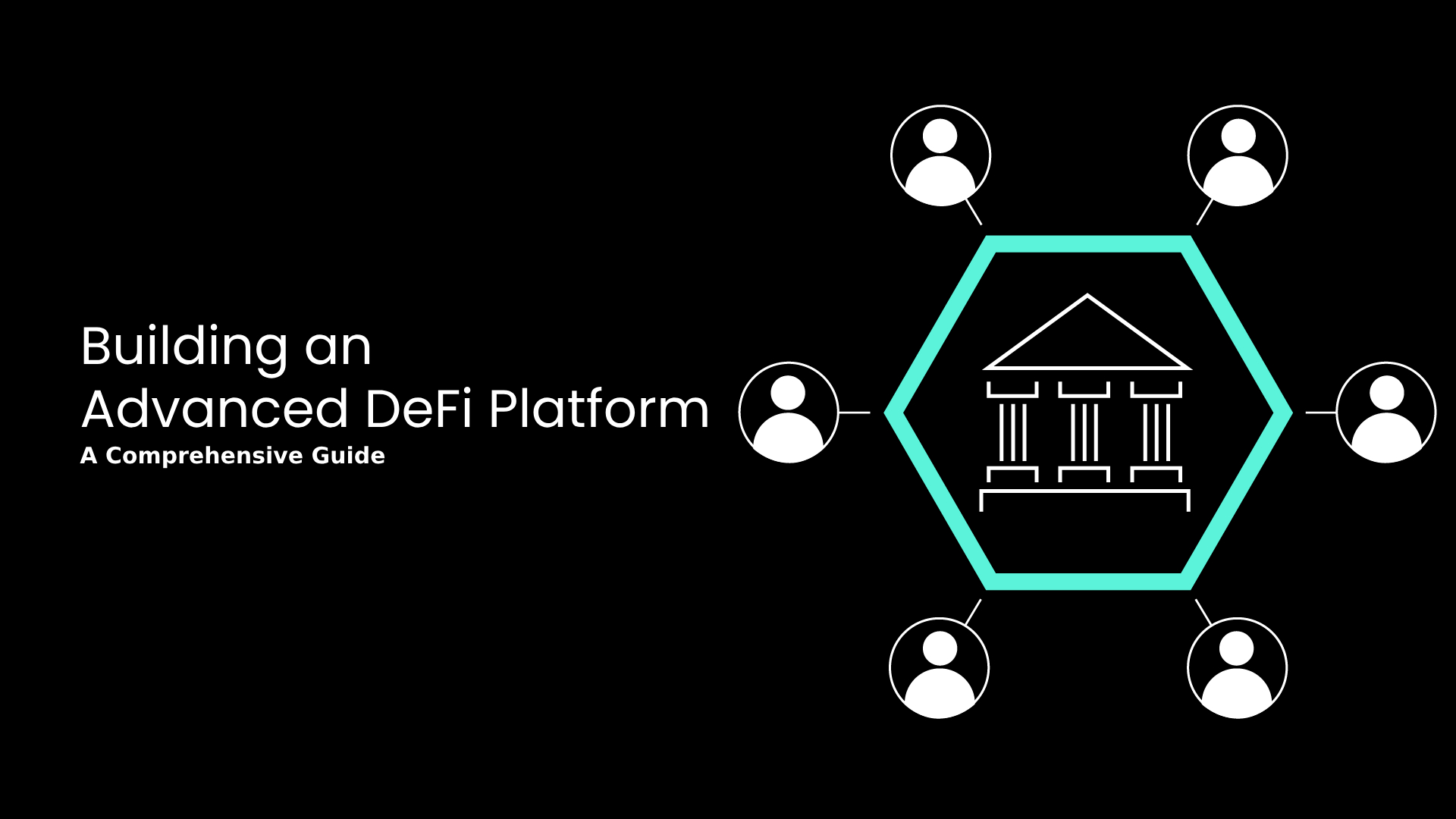Building an Advanced DeFi Platform: A Comprehensive Guide
 Pooja Negi
Pooja Negi
Decentralized Finance (DeFi) has emerged as one of the most promising sectors within the blockchain industry, offering innovative financial services without the need for traditional intermediaries. Developing an advanced DeFi platform requires a deep understanding of blockchain technology, smart contracts, and user requirements.
In this guide, we'll explore the key steps and considerations involved in creating an advanced DeFi platform development with the assistance of a specialized DeFi development company.
1. Define Your DeFi Platform's Objectives:
Before diving into development, clearly define the objectives and target audience for your DeFi platform. Determine whether you're building a decentralized exchange (DEX), a lending protocol, a yield farming platform, or a combination of these and other DeFi services.
2. Select the Right Blockchain Platform:
Select a blockchain platform that fits the needs and objectives of your project. Ethereum is the most popular choice for DeFi development due to its mature ecosystem, robust smart contract capabilities, and wide adoption. However, other platforms like Binance Smart Chain, Solana, or Polkadot may offer scalability and cost advantages.
3. Smart Contract Development:
Smart contracts are the backbone of any DeFi platform, enabling automated and trustless execution of financial transactions. Work closely with your DeFi development company to design and develop secure and audited smart contracts that power your platform's functionalities, such as token swaps, lending, borrowing, or liquidity provision.
4. Liquidity Provision and Market Making:
Liquidity is essential for the success of any DeFi platform. Implement mechanisms for liquidity provision, such as automated market makers (AMMs) or liquidity pools, to ensure ample liquidity for trading and other activities on your platform. Consider incentivizing liquidity providers with rewards or fees to attract and retain liquidity.
5. User Interface and Experience (UI/UX):
Design an intuitive and user-friendly interface that makes it easy for users to interact with your DeFi platform. Provide clear instructions, visualizations, and feedback mechanisms to guide users through complex processes like trading, lending, or staking. A smooth and engaging UI/UX enhances user adoption and retention.
6. Security and Audits:
Security is paramount in DeFi, where users entrust their funds to smart contracts and protocols. Conduct thorough security audits of your smart contracts and platform architecture to identify and mitigate potential vulnerabilities. Collaborate with reputable auditing firms to ensure the highest level of security and trust for your users.
7. Integration with Oracles:
Oracles provide external data to smart contracts, enabling DeFi platforms to interact with real-world information such as asset prices, interest rates, or market data. Integrate reliable and decentralized oracles into your platform to ensure accurate and tamper-resistant data feeds for critical functions like price feeds and liquidations.
8. Compliance and Regulation:
Stay informed about the regulatory landscape surrounding DeFi and ensure that your platform complies with relevant regulations and laws. Implement necessary measures such as KYC/AML procedures and regulatory reporting to mitigate legal risks and foster trust among users.
9. Community Engagement and Governance:
Foster an active and engaged community around your DeFi platform by incentivizing participation and empowering users to have a say in platform governance. Implement governance mechanisms such as decentralized autonomous organizations (DAOs) to enable community members to propose and vote on platform upgrades, changes, and policies.
10. Continuous Improvement and Innovation:
DeFi is a rapidly evolving space, constantly emerging new protocols, features, and best practices. Stay ahead of the curve by continuously improving and innovating your DeFi platform. Listen to user feedback, monitor industry trends, and adapt your platform to meet the evolving needs of the DeFi community.
Conclusion:
Developing an advanced DeFi platform requires careful planning, technical expertise, and a commitment to security, usability, and compliance. By partnering with a specialized DeFi development company and following best practices in blockchain development, entrepreneurs can create a robust and user-friendly DeFi platform that unlocks the full potential of decentralized finance. With the rapid growth of the DeFi ecosystem and increasing adoption of blockchain technology, there are ample opportunities for innovative DeFi platforms to drive financial inclusion, innovation, and decentralization in the global economy.
Subscribe to my newsletter
Read articles from Pooja Negi directly inside your inbox. Subscribe to the newsletter, and don't miss out.
Written by
